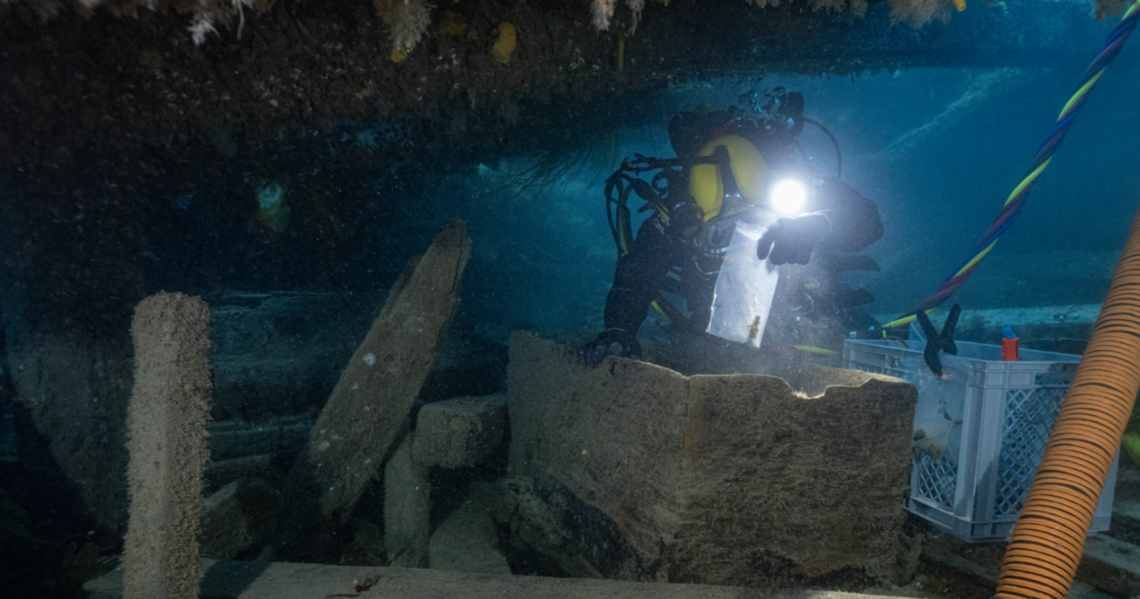Divers find ‘fascinating’ artifacts from 19th century shipwrecks off Canada, video shows

Divers recently recovered a trove of valuable artifacts from the wrecks of two ships that vanished in the frigid waters of the Arctic 176 years ago.
While taking part in an ill-fated search for the Northwest Passage in 1848, the British-made vessels — the HMS Erebus and HMS Terror — became trapped in the ice off the northern coast of Canada.
Stranded in the cold, all 129 men aboard perished, and the wooden ships disappeared without a trace. That is, until 2014, when their hulls were discovered about 150 feet below the surface near King William Island.
Since their finding, archaeologists have taken part in annual dives down to the wrecks, combing through the algae-covered remains in search of sunken treasure.
‘Fascinating’ artifacts
During a 12-day period last summer, archaeologists conducted 68 dives to the Erebus wreck, during which they brought in a haul of “fascinating” artifacts and took “high-quality” photos, according to a Jan. 22 news release from Parks Canada.
“Pieces of this mysterious puzzle are being retrieved allowing us to better understand the fascinating events of this incredible expedition,” Steven Guilbeault, Canada’s minister of environment and climate change, said in the release.
In an officer’s cabin, they located a variety of items, including a complete thermometer, a fishing rod and a book cover, officials said.
In an area believed to be the captain’s pantry, divers discovered a medicine bottle — still sealed since the ship’s sinking — and the remains of a leather shoe.
Additionally, they recovered pistols and coins in the forecastle area, the forward part of the ship where the majority of the crew would have lived, officials said.
The letters “BRITANN” can be seen engraved on one of the coins, which depicts a seated individual with a Union Jack shield, video footage shows. Another coin depicts an anchor and crown.
Archaeologists also dove down to the Terror wreck in order to document the vessel with an echosounder, though no artifacts were said to have been retrieved from the site.
All of the recovered items will undergo conservation treatment before they are displayed at the Nattilik Heritage Centre in the northern territory of Nunavut.
“Retrieving artifacts from the wrecks and taking high-quality imagery provides insight for the entire world as to what life was like for the crews aboard these ships during this expedition,” Ron Hallman, the president of Parks Canada, said in the release.
During previous dives, hundreds of artifacts have been collected from the wrecks, including ceramic dishes, a pencil case, a hairbrush and an ornamental shoulder pad from an officer’s uniform.
4,000-year-old altar was ‘lost’ in Ireland. Then professor has ‘eureka moment’
‘Spicy’ wine? New study reveals ancient Romans may have had peculiar tastes
Massive 2,600-year-old temple — unlike any other — unearthed on hilltop in Greece

